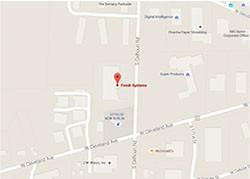Free Shipping on Orders Over $299 (Restrictions Apply)
What is viscosity and why is viscosity important for a great finish?
We have mentioned viscosity in previous Newsletters and this month we want to discuss viscosity more in detail. It is important to know at what viscosity and spray gun set-up will I see a uniform quality finish, so future applications are repeatable. Briefly, the viscosity of a material is an indication of its ability to resist flow. The flow characteristics of a viscous coating will require greater air atomizing pressure or pump pressure in the case of AAA or Airless equipment to obtain the uniform quality finish. Centipoise is a worldwide measurement of viscosity. Always obtain a Product Data Sheets...
I’M CONFUSED….DO I USE HVLP OR COMPLIANT AIR SPRAY TECHNOLOGY?
There are several factors that determine which air spray technology best suites your needs: volume of coatings sprayed, local & state regulations, the coating’s sprayability, and the class of finish. The term compliant air spray technology means a gun uses reduced air atomizing pressure (say 30 psi) to atomize a coating that years ago required + 50 psi. A compliant gun needs to provide 65% coating transfer efficiency with a decrease in over spray.* Volume of Coatings If you are the hobbyist restoring a vehicle, or making furniture for your granddaughter, you are not going to puncture a hole...
“What should I look for in a proper spray pattern?”
When atomized coating particle size is small like a fine mist, the coating will likely level out and dry to a smooth finish. The two spray gun adjustments are your fluid flow rate, and atomizing air pressure to obtain the ideal atomized mist. The technique to evaluate your atomized pattern is to spray on glass or pre-finished panels. This practice is helpful in adjusting your gun settings for a smooth dry film. The adhesion on glass will likely be poor but that’s not what you are evaluating. Other times we use panels with several previous coats, and we keep sanding them...
“Why is there a variation in my coatings dry time?”
While strolling through the big box store last week I spotted an inexpensive combination temperature and humidity gauge which leads me into our TECH TIP. Besides variations in the wet coating application thickness, humidity and ambient air temperature are two other factors that affect dry time. Chemists formulate air-dry coatings for application and drying between 65 and 85 degrees F. High temperatures, especially when caused by direct sunlight, can lead to blistering. Which is a result of the wet media vaporizing, and building pressure under the paint layer until the wet paint bubbles away from the substrate? Lower temperatures especially those below...
Best practices for correctly setting atomization air pressure to your SATA and other brands of spray guns.
The biggest, and most obvious thing we see, is painters who do not regulate the in-coming atomization air pressure correctly to the cup gun from a wall regulator. We see booths with wall regulators either maxed out at 90-130 psi, no regulator, unreadable gauges, cheater valves, undersized hose, or use of a regulator with minimal CFM capabilities. Having a properly sized diaphragm type wall regulator to handle the volume you need is very important as some HVLP guns can require up to 15.2 CFM. We would recommend a minimum 30 CFM wall regulator and 5/16” or 3/8” air hose depending on length...
